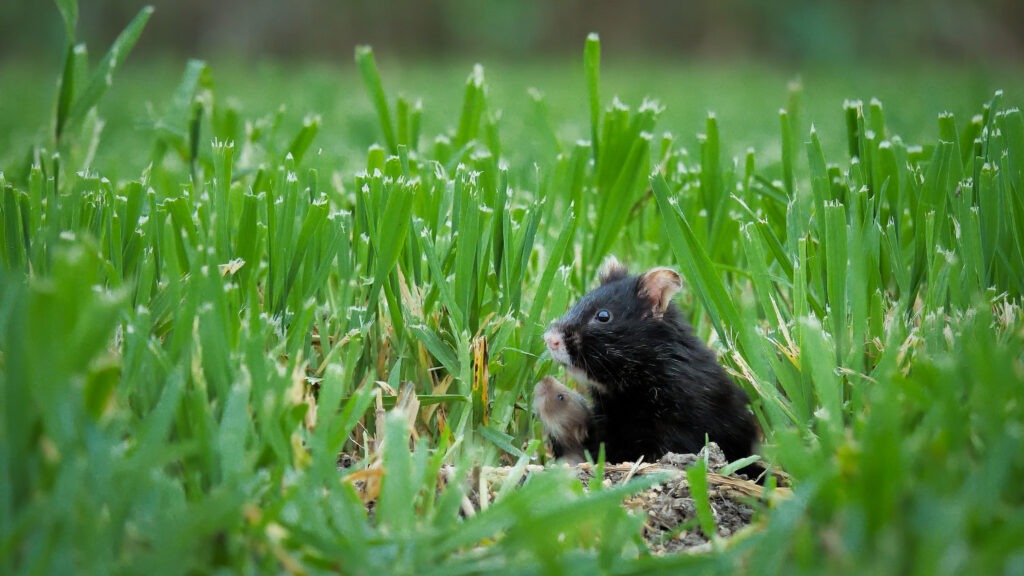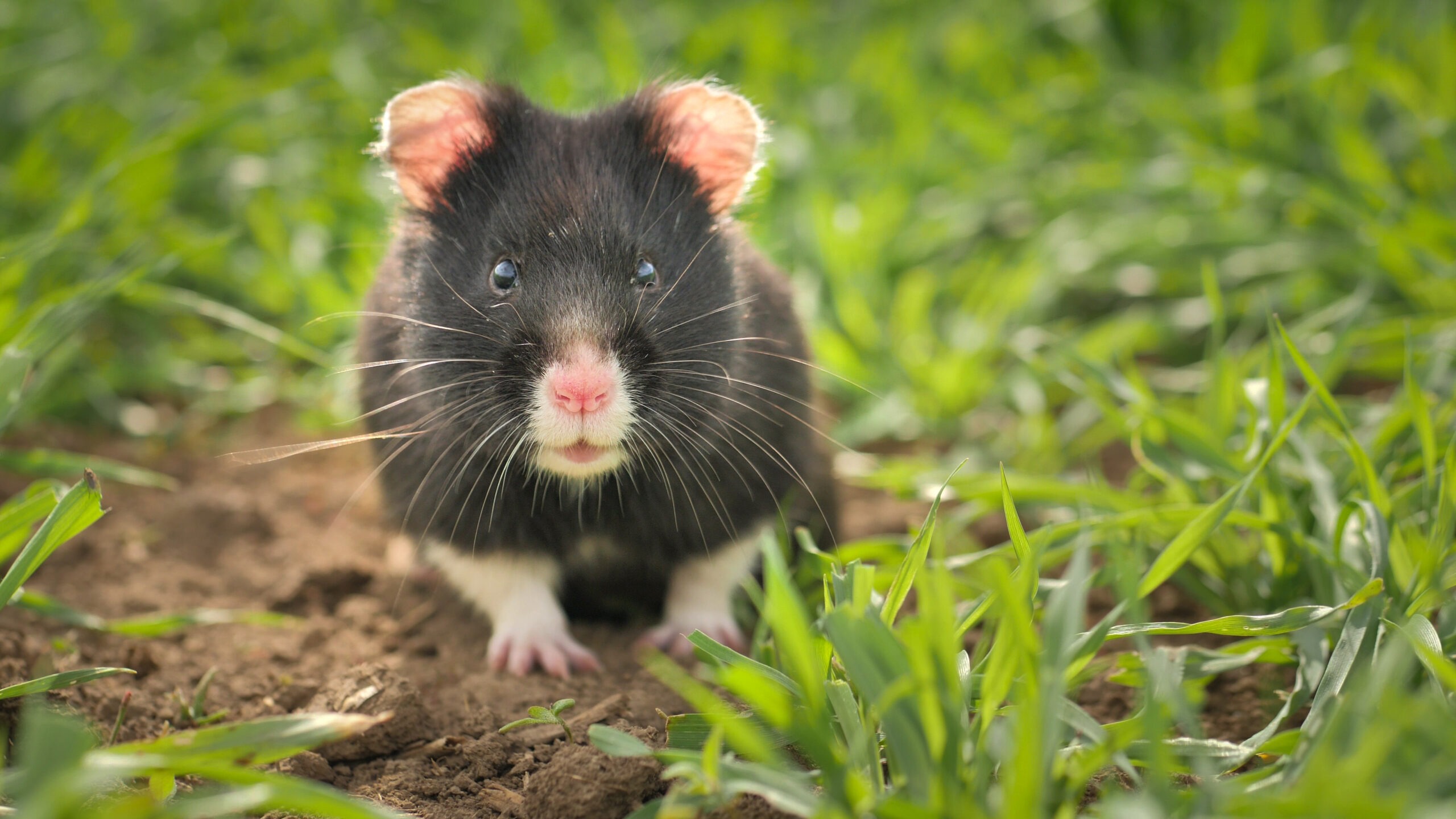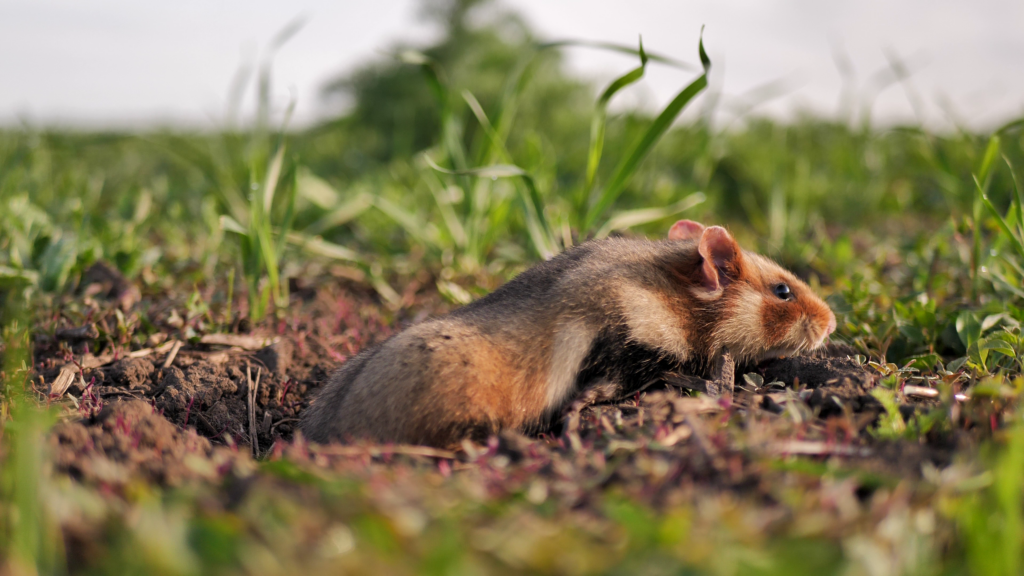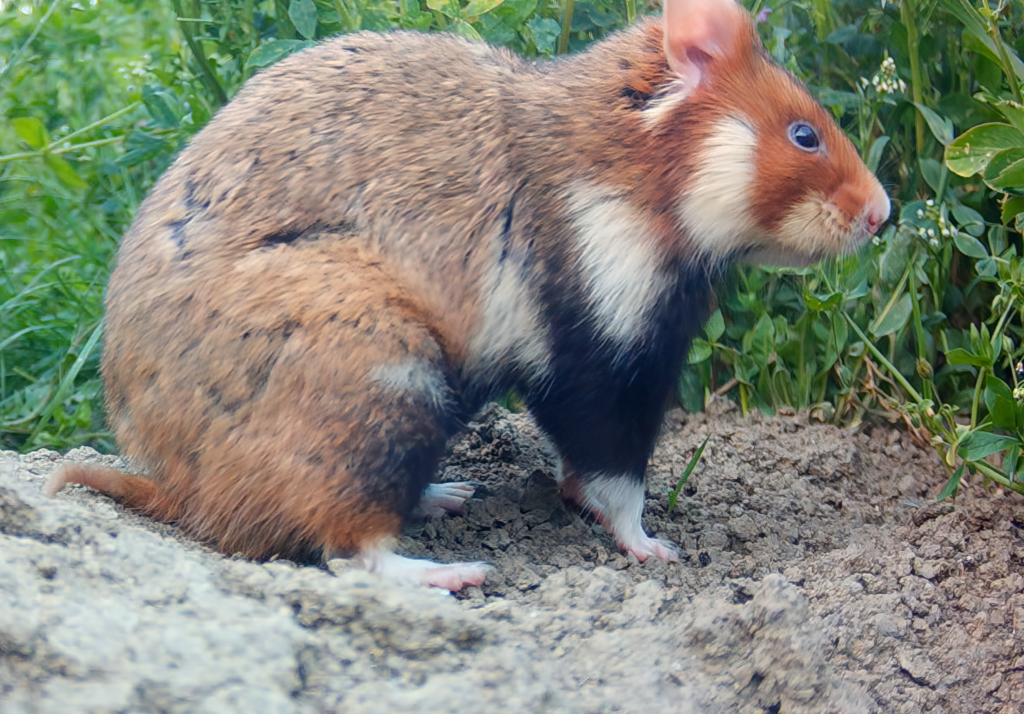Its tricolor multicolored fur pattern is characteristic for the Common hamster. In addition, there are other documented color variants, which are rarer. These include piebald, yellow (flavistic), red, sand-colored and bicolored Common hamsters or albinos. The best known is the color morph of the black hamster, which frequently occurs in Thuringia, Germany. As part of the film project “The Last Common Hamsters”, we have also documented the life of the black Common hamsters occurring in Thuringia and observed them over a period of several years.
Origin and inheritance of the black coloration
Why are some hamsters black? The black Common hamster is also called melanistic Common hamster. Generally, melanism is when the skin, hair or scales are darkened by pigments. This can be acquired through environmental factors as well as inherited. Like all traits, inherited melanism probably originates from a spontaneous mutation in one or more gene loci that determine coat pattern. Spontaneous mutations or environmental toxins can cause an individual genetic defect. The appearance of this defect is then expressed in clearly rarer color morphs. These are seldom observed individual cases. Black color morphs with large parts of the colorful color variant are also called atypical melanistic hamsters.
The typical melanism in Thuringian black hamsters is inherited and is already distinct at birth. However, the fur of the melanistic hamsters is not completely black. Their muzzle, the paws and partly a spot on the chest or throat are colored white. So parts of the white markings are still visible. The size of the white areas differs from individual to individual. We could also document animals with individual white color spots for example on the back or back of the head.

Our observations in Thuringia do not show any behavioral-ecological isolation. Interactions between colored and black Common hamsters are therefore not different from the behavior among animals with the same color variation, for example between two variegated Common hamsters. The black hamster can reproduce with the multicolored hamster. In this case the black variant is inherited dominantly. According to the rules of inheritance, in a mating between both color variants either all offspring can be black or to different proportions both colored and black. Also in our observations we could document both colored and black young hamsters.
Distribution of black Common hamsters
Black Common hamsters were already described in Thuringia in the 18th century by Sulzer. In Germany, the black hamster is probably only found in Thuringia even today. We could determine proportions of up to 50% of the local hamster population. In purely mathematical terms, black hamsters should actually occur more frequently in the field due to dominant inheritance. Why this is not the case, although black coloration is not a known fitness disadvantage, is still unknown.
Often, the Thuringian occurrences of black hamsters are even considered the only ones in the EU. However, black-colored Common hamsters are also known from other countries, such as Ukraine and Russia. Whether there is a genetic similarity between them and the Thuringian black hamsters, i.e. whether the same gene loci differ from the variegated color variant here, is unknown.
last edit: 2023-04-08
Literature
Chişamera, Gabriel & Birău, Alexandru & Cobzaru, Ioana & Gavril, Viorel (2023): Atypical melanistic color in common hamsters Cricetus cricetus (Rodentia: Cricetidae) in Romania. North-Western Journal of Zoology. 19. 57-61. Online: https://www.researchgate.net/publication/371807065_Atypical_melanistic_color_in_common_hamsters_Cricetus_cricetus_Rodentia_Cricetidae_in_Romania
Institute of Ecology and Evolution A.N. Severtsov of the Russian Academy of Sciences:To the Ural for the off-color hamsters. Online: https://sev-in.ru/en/node/1768
Kayser A. & Stubbe M. (2000): Colour variation in the common hamster Cricetus cricetus in the north-eastern foot-hills of the Harz Mountains. Acta Theriol. 45: 377–383. Online: https://www.researchgate.net/publication/271322489_Colour_variation_in_the_common_hamster_Cricetus_cricetus_in_the_north-eastern_foot-hills_of_the_Harz_Mountains
Kryštufek, B., Pozdnyakov, A., Ivajnsic, D., Janžekovič, F. (2016): Low phenotypic variation in eastern common hamsters Cricetus cricetus. Folia Zoologica 65: 148-156. Online:https://www.researchgate.net/publication/305258150_Low_phenotypic_variation_in_estern_common_hamsters_Cricetus_cricetus
Sulzer, Friedrich Gabriel: Versuch einer Naturgeschichte des Hamsters. Göttingen und Gotha 1774. Online: https://www.digitale-sammlungen.de/de/view/bsb10309025?page=5
Zimmermann, Wolfgang (1968): Die gegenwärtige Verbreitung melanistischer Hamster (Cricetus c. cricetus L.) in Thüringen und Bemerkungen zu deren Morphologie. Hercynia N.F. 6: 80–89. Online: https://www.zobodat.at/pdf/Hercynia_6_0080-0089.pdf


